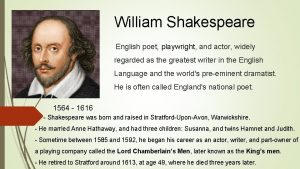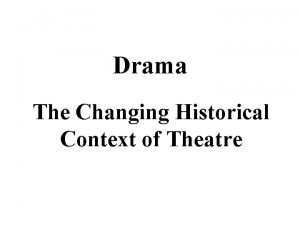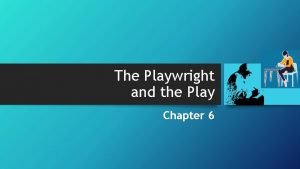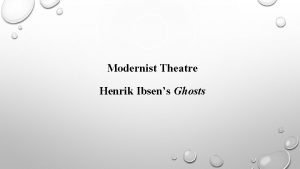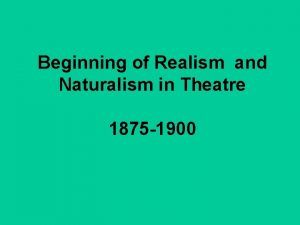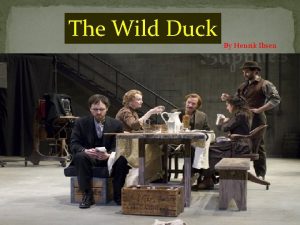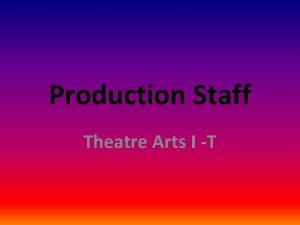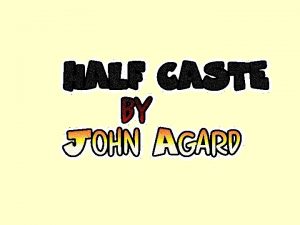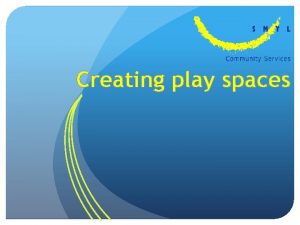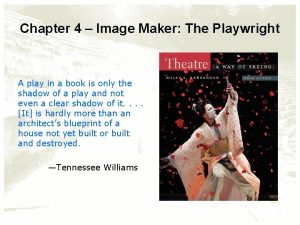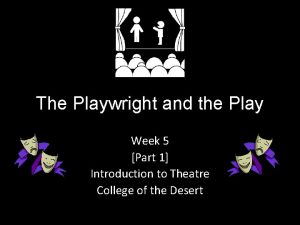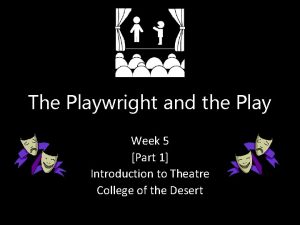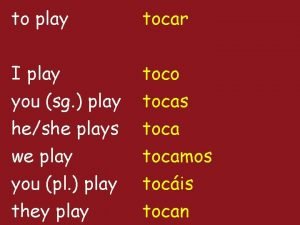The Playwright and the Play Chapter 6 Creating









- Slides: 9

The Playwright and the Play Chapter 6

Creating the World of the Play The playwright creates the template: The subject (people) and verb (action) of the drama • • • Purpose of play • Entertain • Raise timeless questions • Make a political or social comment Sets the tone, the agenda and the approach Based on • History, biography, autobiography or imaginary story resembling everyday life or based on a fantasy or a nightmare

Creating the World of the Play The playwright creates the template: Chooses the focus of the play • A character trait • Mood of a group of people emphasized by outside forces • The human senses • Other aspects of life Chooses the order of events Chooses the conflict that springboards action by characters

Structural Conventions: The Rules of the Game Limited Space • The play is confined to a world of its own Limited Time • Length of performance • Timespan inside the play Strongly Opposed Forces • Antagonist(s) opposes the protagonist(s) • Create friction or tension A Balance of Forces • An imbalance of forces does not make for good drama Incentive and Motivation • Characters strive for a desired outcome

Structural Conventions: The Creating Structure Plot vs. Story • The Plot is based on a story which designs the arrangement of events and characters from the story. Particular incidents are selected and arranged for maximum dramatic impact. • The Story is a full narrative account of what people do in a chronological order of events. It may take the form of a novel, short story, or other medium.

Structural Conventions: The Creating Structure The Opening Scene Its purpose is to start the action and set the tone and style for everything that follows. • It poses a problem to be solved • Establishes an imbalance of forces or a disturbance in their equilibrium that compels them to respond

Structural Conventions: The Creating Structure Obstacles and Complications Characters move through alternating experiences of achievement and defeat through the use of obstacles and complications. • Obstacles- That which delays or prevents the achieving of a goal by a character. An obstacle creates complication and conflict. • Complications- Introduction in a play of a new force which creates a new balance of power and entails a delay in reaching the climax.

Structural Conventions: The Creating Structure Crisis and Climax A play usually builds from one crisis to another. • Crises- A point in a play when events and opposing forces are at a crucial moment, and when the course of further action will be determined. There may be a series of crises leading to the definitive climax. • Climax- The high point in the development of a dramatic plot. The scene toward the end of a drama in which all the forces reach their highest pitch and the fate of all the characters is determined.

Structural Conventions: Point of View Structure, Character Portrayal and Point of View • Tragic or comic • Humorous or sad • Mixture of the two • The optimist vs. the pessimist point of view of the action of the play The artist makes it clear of his/her point of view. It is direct and deliberate.
